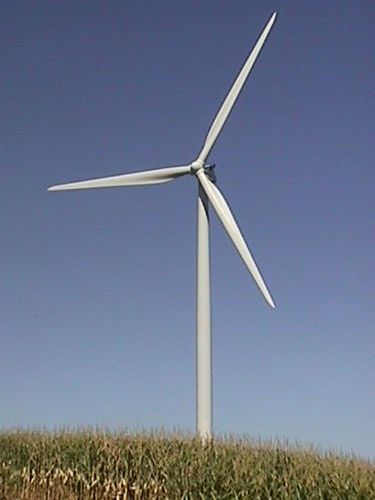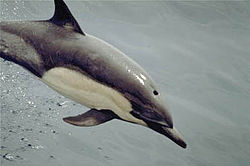
Weather Influences Wind Turbine Fatalities [includes journal article references]
Current Results
31 Jan 2008
Photo courtesy of Carleton College
Wind and storms affect how deadly wind-energy turbines are for bats. Several studies in North America report that most bats die during nights of light wind, blowing at less than 13 miles per hour (21 kilometres per hour). Bat mortality at wind turbines also spikes just before and after a storm front passes by.
Different wind energy installations within a region have documented similar timing in fatalities, suggesting that a weather pattern can have widespread influence.
Avian influenza update: two further swans positive for H5N1
Defra – www.defra.gov.uk
01 Feb 2008
Area: United Kingdom, England, Dorset
Defra has today confirmed that another two dead wild mute swans, collected on 28 January as part of wild bird surveillance in the same area in Dorset have tested positive for highly pathogenic H5N1 Avian Influenza.
This brings the total number of swans confirmed with H5N1 on the site to nine. From today, any further new cases will be published on the Defra website at www.defra.gov.uk/avianflu. Further cases in the coming weeks would not be unexpected.
As described in the recent epidemiology report, evidence suggests that the level of infection in the mute swan population is low, and there remains no evidence of spread to other wild birds or domestic poultry.
Related News
The Link Between Wild Birds and Livestock Salmonella
Poultry Site – www.thepoultrysite.com
31 Jan 2008
Several studies have shown that a number of serovars of Salmonella enterica may be isolated from wild birds, and it has been suggested that wild birds may play a role in the epidemiology of human and livestock salmonellosis.
However, little is known about the relationship between wild bird S. enterica strains and human- and livestock- associated strains in the United Kingdom. A study has been carried out in the UK to investigate the molecular epidemiology of S. enterica infections in wild birds in the north of England and, in particular, to determine if wild bird isolates were similar to those associated with disease in livestock or humans.
Two TB-positive deer confirmed in Iosco
Iosco County News-Heard
30 Jan 2008
J Morris
Area: USA, Michigan, Iosco county
The state’s routine bovine Tuberculosis (TB) testing has identified two TB-positive deer in Iosco County taken during the 2007 hunting season. That announcement was made Thursday by the Michigan departments of Natural Resources (DNR) and Agriculture (MDA). As a result of the two TB-positive deer, MDA designated two “Potential High-Risk Areas” in Iosco County. The areas are south of the state’s bovine TB management zone.
Related News
 Twenty elk test positive for disease
Twenty elk test positive for diseaseJackson Hole Star-Tribune - www.jacksonholestartrib.com
01 Feb 2008
C Urbigkit
Area: USA, Wyoming, Sublette county
Twenty elk trapped on the Fall Creek feedground tested positive for exposure to brucellosis, Wyoming Game and Fish Department officials said Wednesday. That came a day after five elk had to be destroyed as a result of problems trapping and processing animals at the feedground.
In fact, two of the positive tests were from animals that were euthanized on site due to injury. The others were from 18 cow elk that were shipped to a USDA-inspected processing plant in Idaho for slaughter Wednesday morning. Meat from the animals is safe for human consumption and will be brought back to Wyoming for distribution through the Food Bank of the Rockies.
OTHER WILDLIFE DISEASE RELATED NEWS
Photo courtesy of Wikipedia

- Video: Farm Fish Threaten Wild Fish? [2:48 min]
- South Asia anti-wildlife trade network to be formed
- Unexplained "White Nose" Disease Killing Northeast Bats
- Un-Common Dolphin Stranded in Barnstaple
- Death of tigress remains a mystery
- States differ on solution to deadly fish virus
- Globetrotting Black Rat Genes Reveal Spread Of Humans And Diseases





No comments:
Post a Comment